Office Air Quality Improvement with Plants: Practical Tips for Success
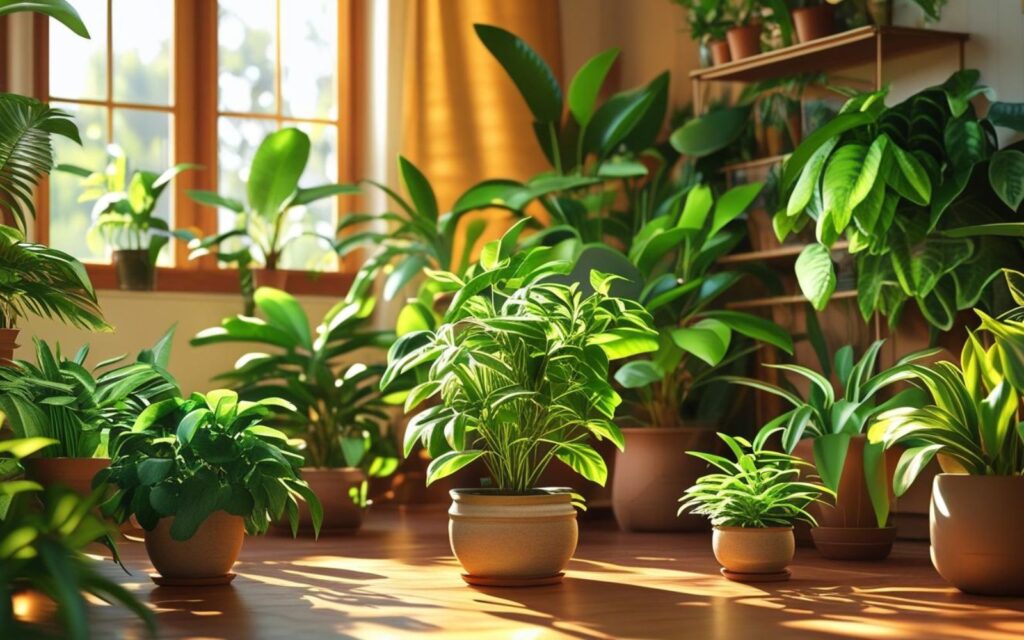
Did you know the air in your office could be more polluted than outdoor air? From volatile organic compounds (VOCs) released by office furniture to carbon dioxide buildup in sealed spaces, poor indoor air quality can significantly impact your well-being and productivity.
Office air quality improvement with plants offers a simple, green solution to enhance wellness and freshen the air in your workspace.
Using indoor plants in your workspace isn’t just about aesthetics. Improving office air quality with plants can help purify the air, remove toxins, and even boost your mood.
In this article, we’ll discuss the practical ways to enhance indoor air quality using plants, while addressing common air pollutants and providing actionable tips for success.
Key Takeaways
- Indoor plants help filter air pollutants, including formaldehyde, carbon monoxide, and VOCs.
- Strategic plant placement in your office can maximize air-purifying benefits.
- Regular care ensures your plants thrive in real-world conditions.
- Combining plants with ventilation and other strategies enhances air quality.
Why Indoor Air Quality Matters
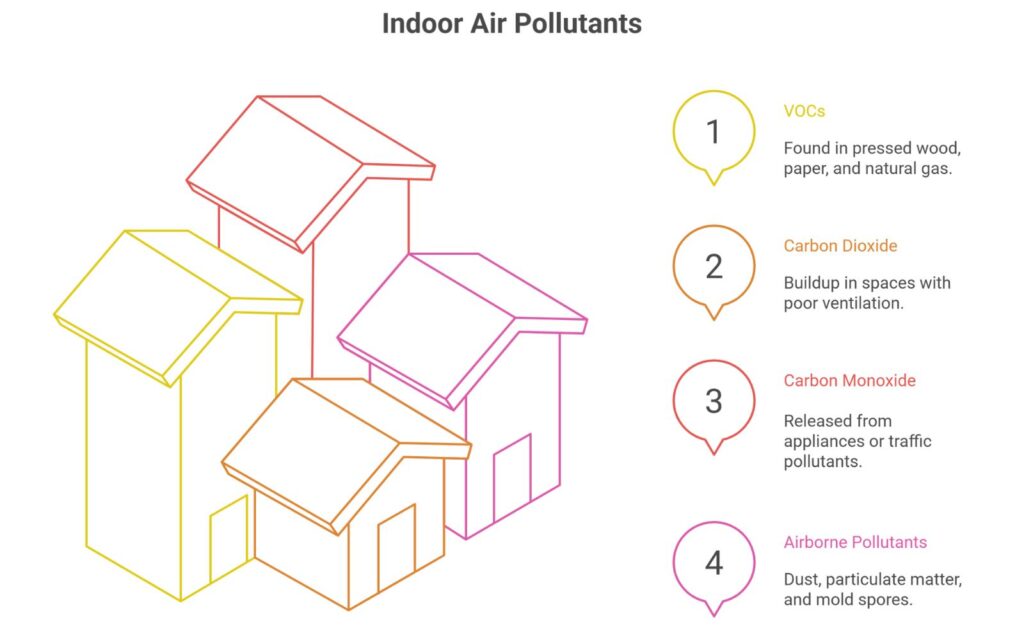
Most people spend up to 90% of their time indoors, with a significant portion of that time spent in offices.
Poor air quality, often caused by indoor air pollutants like VOCs, cigarette smoke, and mold, can lead to serious health issues, including sick building syndrome and chronic obstructive pulmonary disease.
The primary culprits?
- Volatile organic compounds (VOCs): Found in pressed wood products, paper, and natural gas.
- Carbon dioxide (CO2): Buildup in spaces with poor ventilation.
- Carbon monoxide (CO): Released from appliances or traffic pollutants entering buildings.
- Airborne pollutants: Dust, particulate matter, and mold spores.
Plants to the rescue! Air-purifying plants absorb these harmful toxins, improving both the air you breathe and your overall well-being.
How Plants Improve Indoor Air Quality
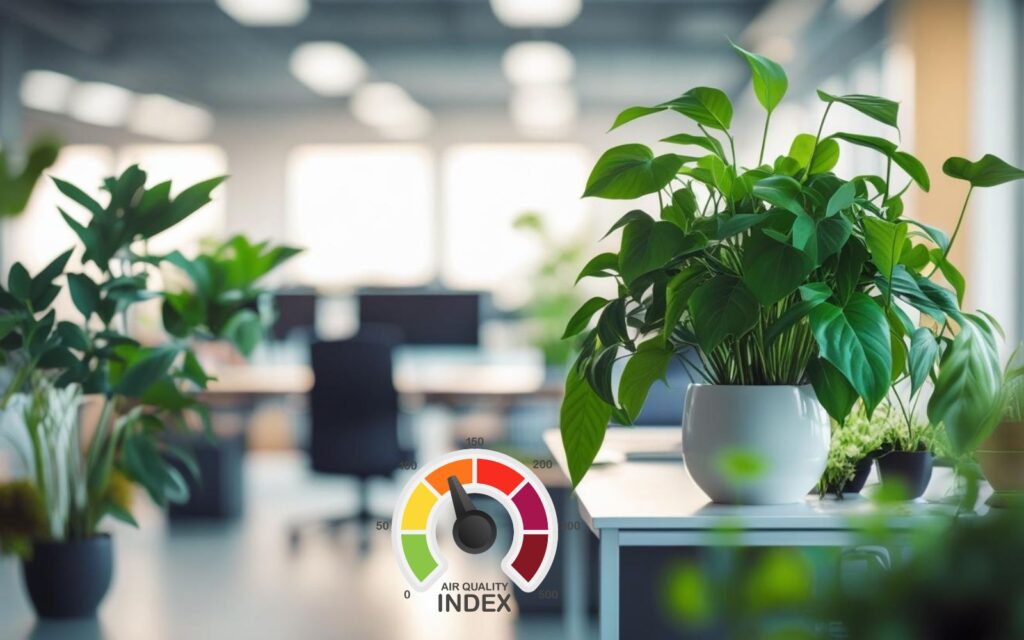
Natural Air Purifiers
Plants act like living air purifiers, filtering toxins such as benzene, formaldehyde, and VOCs.
They also absorb carbon dioxide and release fresh oxygen, making your workspace feel cleaner and more inviting.
Soil Microorganisms and Potting Soil
It’s not just the leaves that clean the air. Soil microorganisms in potted plants play a role in breaking down harmful compounds, further reducing indoor air pollution.
Boosting Humidity
Indoor environments with heating or air conditioning can become very dry.
Plants release moisture through transpiration, keeping the air more comfortable and reducing airborne pollutants, such as dust.
Real-World Benefits Backed by Research
Studies have shown that, even in real-world conditions, certain plants can significantly reduce indoor air pollution.
For example, research from NASA on space stations highlighted how plant species like Snake Plants and Peace Lilies effectively remove toxins in sealed chambers.
Best Plants to Improve Air Quality
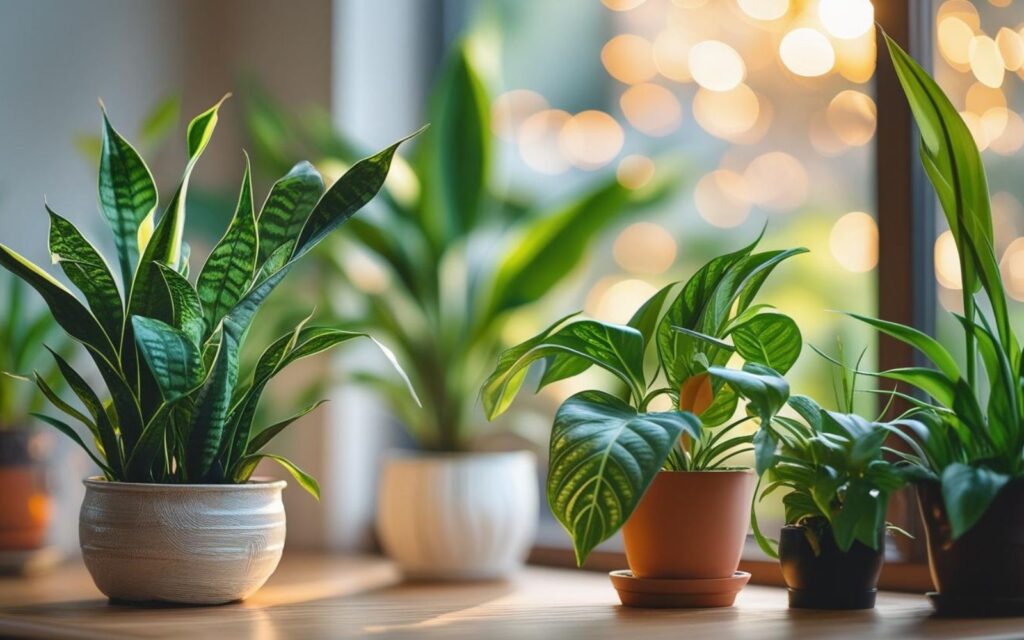
Not all plants are equal when it comes to cleaning the air. Here are some best office plants for indoor spaces that excel at filtering pollutants:
1. Spider Plant
- Removes carbon monoxide, formaldehyde, and VOCs.
- Easy to care for and thrives in low light.
2. Snake Plant (Sansevieria)
- Absorbs toxins like benzene and carbon dioxide.
- Releases oxygen even at night, making it ideal for 24/7 spaces.
3. Peace Lily
- Filters mold spores and formaldehyde.
- A flowering plant that adds beauty to any office.
4. Areca Palm
- A natural humidifier that removes toxins like xylene.
- Perfect for larger indoor spaces.
5. Pothos (Devil’s Ivy)
- Ideal for enhancing air quality in offices with limited natural sunlight.
- Filters VOCs and airborne pollutants.
6. Bamboo Palm
- Known to reduce indoor air pollutants like formaldehyde and carbon monoxide.
These air-purifying plants are highly effective and low maintenance, making them ideal for office environments.
Strategic Placement of Office Plants
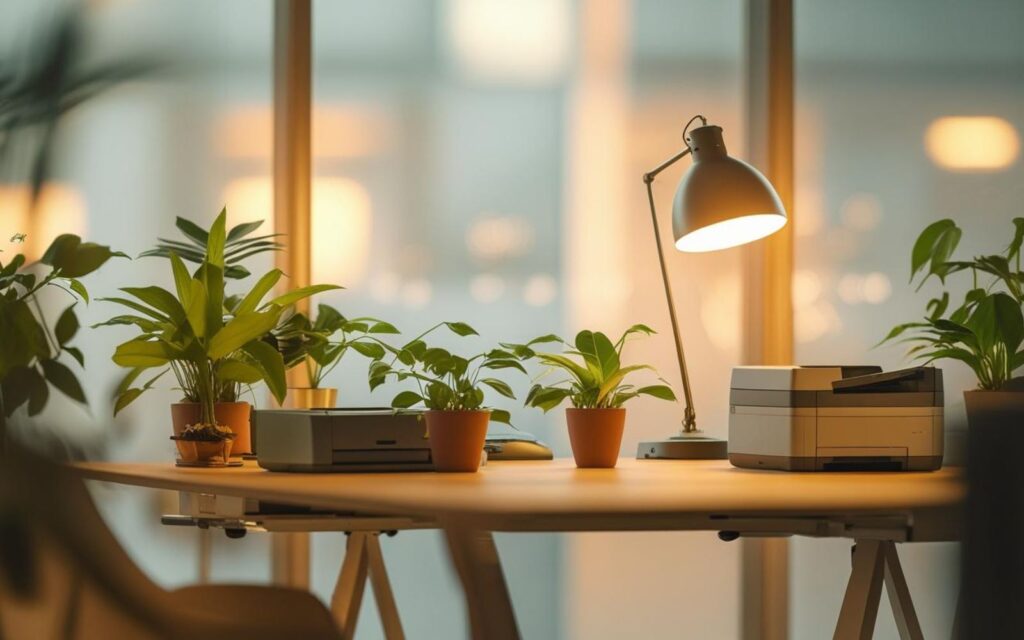
To maximize the benefits of air-purifying plants, place them strategically throughout your office:
- Near Air Pollutant Sources: Position plants near natural gas appliances, printers, and pressed wood furniture to absorb VOCs and other pollutants.
- By Air Conditioning Units: Plants like Spider Plants thrive near air exchange systems, helping to filter airborne pollutants.
- On Desks: Place small potted plants, such as Pothos or succulents, on desks to promote cleaner air and enhanced well-being.
- In high-traffic areas: Use flowering plants like Peace Lilies to freshen the air in common areas, such as break rooms.
- In Corners: Large plants like Areca Palms can fill unused floor space while enhancing air quality.
By spreading plants throughout your indoor environments, you ensure better coverage for removing toxins.
Easy Maintenance Tips for Thriving Office Plants
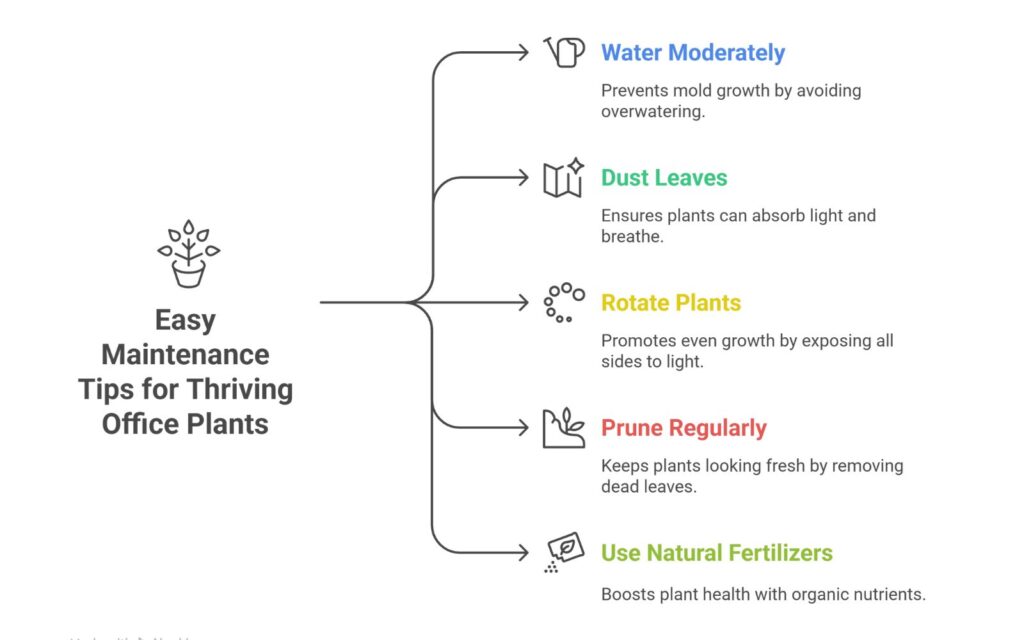
Even the best plants won’t help if they’re neglected. Here are practical tips to keep your indoor plants healthy:
- Water Moderately: Overwatering can cause mold growth in potting soil. Check the soil before watering.
- Dust Leaves: Use a damp cloth to clean leaves regularly, ensuring they can “breathe” and absorb light.
- Rotate Plants: Turn plants periodically to ensure even growth.
- Prune Regularly: Remove yellow or dying leaves to keep plants looking fresh.
- Use Natural Fertilizers: Boost plant health with occasional organic plant food.
Enhance Air Quality with Complementary Strategies
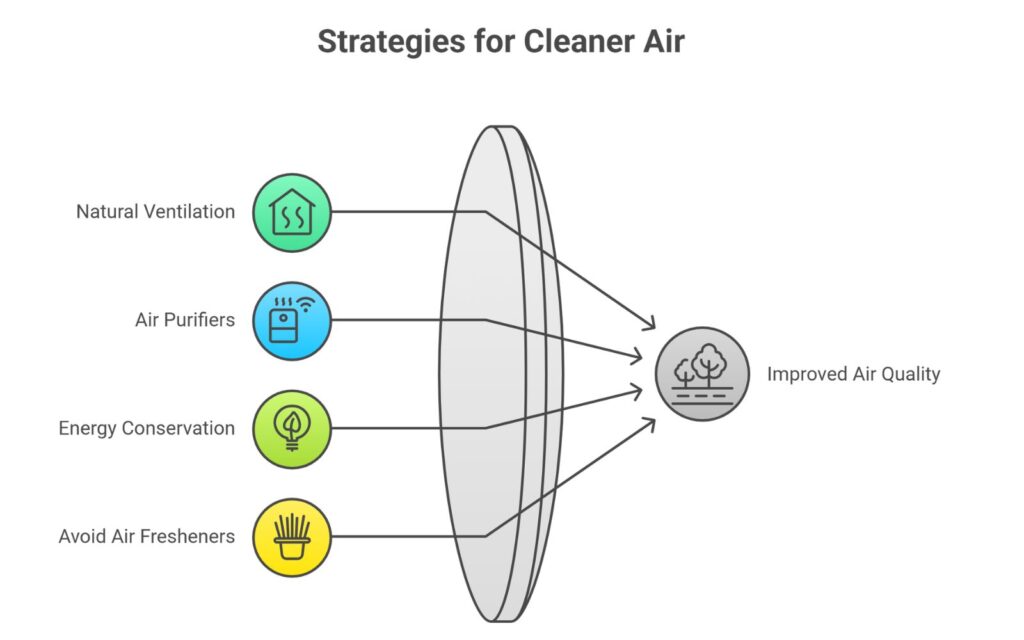
While plants are fantastic for improving air quality, combining them with other methods can make a bigger difference:
- Natural Ventilation: The importance of air ventilation – Open windows to allow fresh air to circulate whenever possible.
- Air Purifiers: Use purifiers to remove particulate matter alongside your plants with eco-friendly air quality solutions.
- Conserve Energy: Energy-efficient systems reduce air pollution caused by heating and cooling systems.
- Avoid Air Fresheners: Use plants instead of chemical sprays to add natural freshness.
By incorporating plants alongside these measures, you’ll create a workspace with clean indoor air that promotes productivity and overall well-being.
Consider implementing sustainable office design principles and creating a green office space to maximize the benefits of your air-purifying plants.
Summary
Enhancing office air quality with plants is a practical and natural solution to mitigate indoor air pollution. By selecting the right plant species, strategically placing them, and caring for them with diligence, you can significantly reduce VOCs, carbon dioxide, and other airborne pollutants.
Combine plants with natural ventilation and energy-efficient practices to further enhance indoor air quality.
Start small by adding potted plants to your desk or common areas, and watch as your office transforms into a healthier, more inspiring environment. For more comprehensive strategies, explore how to create an eco-friendly office that supports both environmental sustainability and employee wellness.
Frequently Asked Questions
How Office Air Quality Improvement with Plants?
Indoor plants absorb toxins like VOCs, carbon monoxide, and formaldehyde while releasing fresh oxygen and increasing humidity. Learn more about air quality tips for a healthier office.
What Are the Best Office Plants for Air Quality?
Spider Plants, Snake Plants, Peace Lilies, Pothos, and Areca Palms are among the best air-purifying plants for office environments. Discover more about integrating nature into office spaces.
Can Plants Reduce VOCs and Other Indoor Pollutants?
Yes! Certain plants effectively filter VOCs, formaldehyde, and other pollutants from the air, according to studies, including NASA’s research. Explore natural ways to improve office air.
How Many Plants Do I Need to Clean the Air in My Office?
A general guideline is one air-purifying plant per 100 square meters; however, adding more plants can further enhance air purification. Consider biophilic design for workplace wellness for optimal plant integration.
Do Plants Work Well in Offices with Low Light?
Yes! Low-light plants, such as Snake Plants and Pothos, thrive in dimly lit offices and still provide air-purifying benefits. Learn about benefits of biophilic office design for comprehensive plant integration strategies.

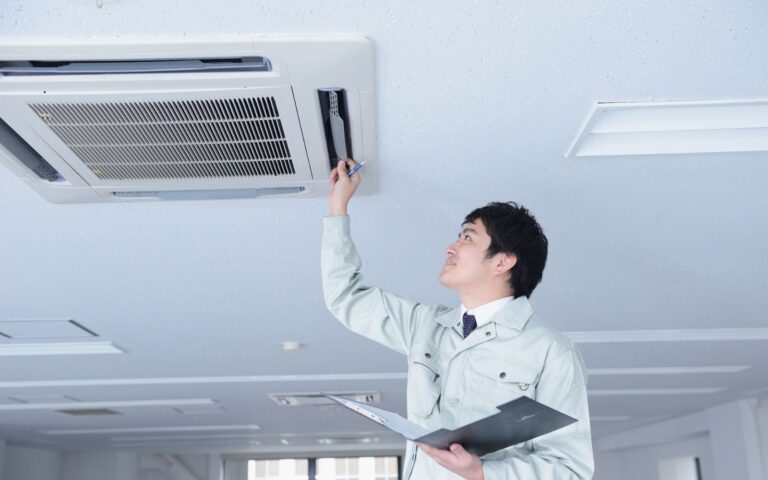

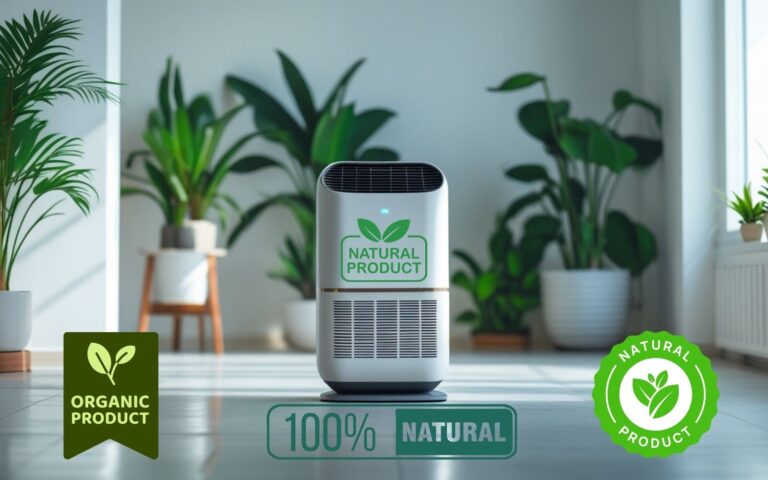
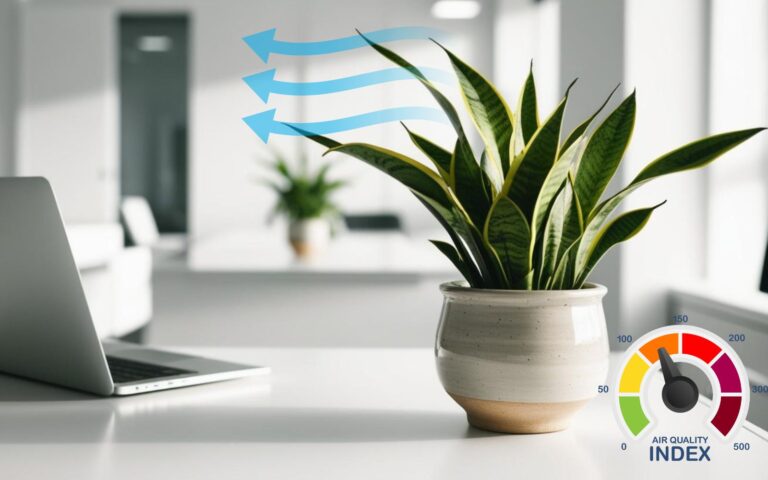

One Comment